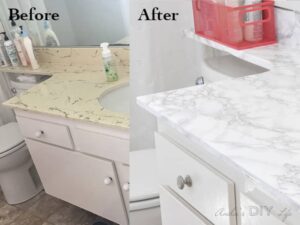 As I await those long, sunny and warm days of summer the voices of my home improvement are calling me. This is the time of year when all those chores and maintenance items around the house begin to move up to the top of the “Honey Do List”. We all have one, that itemized list of home improvement projects and spousal satisfaction jobs. You know what I am referring to with that, if it makes them happy then you need to get it done.
As I await those long, sunny and warm days of summer the voices of my home improvement are calling me. This is the time of year when all those chores and maintenance items around the house begin to move up to the top of the “Honey Do List”. We all have one, that itemized list of home improvement projects and spousal satisfaction jobs. You know what I am referring to with that, if it makes them happy then you need to get it done.
I have my projects planned out before me and will be getting all the materials and tools ready to get to some of them shortly. I do however have one particular one that I have been wanting to accomplish for several years now. This is the year for me to put in an irrigation system in may landscape. I plan on doing it all myself for two obvious reasons, to save money and to experience the satisfaction of knowing I could do it by myself. It’s always good to pick a job that is a little challenging and decide to try and complete it on your own. There are few things more gratifying than to successfully do a home improvement project by yourself.
For my irrigation project I have started by drawing up a plan which locates the sprinklers in an overlapping pattern. You can visit the Rain Bird sprinkler web site and send them a sketch of your yard with measurements that show the layout and size of your lawn and they will design you a working layout of what you need to install your system. They do this as a free service and I found it to be very helpful. They even furnished me with a detailed material list. I would highly recommend that anyone considering the installation of an irrigation system to do this first. I promise that if you do you will be glad that you did.
Once I got my plan I went to a local building supply store and purchased all of my material for the job. I elected to use the rain bird pop up sprinkler heads and connect them with schedule 40 PVC tubing. The PVC is very easy to work with. All you will need is a can of PVC primer, a can of PVC glue, a hacksaw, measuring tape, and some 100 grit sandpaper. What I elected to do in order to save myself a lot of digging was to install my system shallow . I have a lot of mulch beds in my landscape and made use of them to hide my tubing. I layed it out with some wooden grade stakes for my sprinkler head placement. Follow you diagram that you sent for.
I have access to lake water so I simply bought a water transfer pump which will run off of 100v. power. I then ran my tubing on top of the ground and connected all of my heads. I placed the heads just at a depth that would leave the top slightly exposed. ( After you put it all together and check for leaks you can cover it with mulch. ) At the end of each run I installed an air fitting which will allow me to winterize the pipe in the fall by blowing all the water out of the PVC tubing. This will keep it from freezing and still allow me to hide the pipe under the mulch and avoid digging deep ditches. This method is a big time saver and makes it easy to add other lines or heads if you ever need to. Just don’t forget to blow all the water out of the pipes before winter to avoid them freezing and bursting. If you do this you should not have any major problems with your system.
I ran all of my tubing with ridged schedule 40 PVC. I then connected the different zones with a section of rubber garden hose at the pump with a hose splitter. You can get all these parts at the hardware store for low cost. This will allow you to remove your pump easily in the fall. If you are using a faucet connection for your water source you can simply get a hose bib splitter for connecting several different zones at the same faucet. I bought one with four separate hose connections that each have a shut off valve. This works very well for me and allows me to switch to separate zones without having to remove hoses.
This is a good project for you to get done. It can be installed for a fraction of the cost of having a professional do it. If you can take advantage of the shallow system under your mulch or ground cover you will avoid a ton of digging. Just be sure to properly winterize the system in the fall. If you follow the steps and take care to maintain your system you will enjoy it for many years to come. And believe me, it beats dragging all those hoses around the yard by a long shot. So go ahead and make the decision to do it. You can do this job and will be very proud of knowing you did it yourself and saved a ton of money at the same time. Once you get the system installed you will be able to sit on the porch with a tall glass of iced tea and enjoy your summer.






